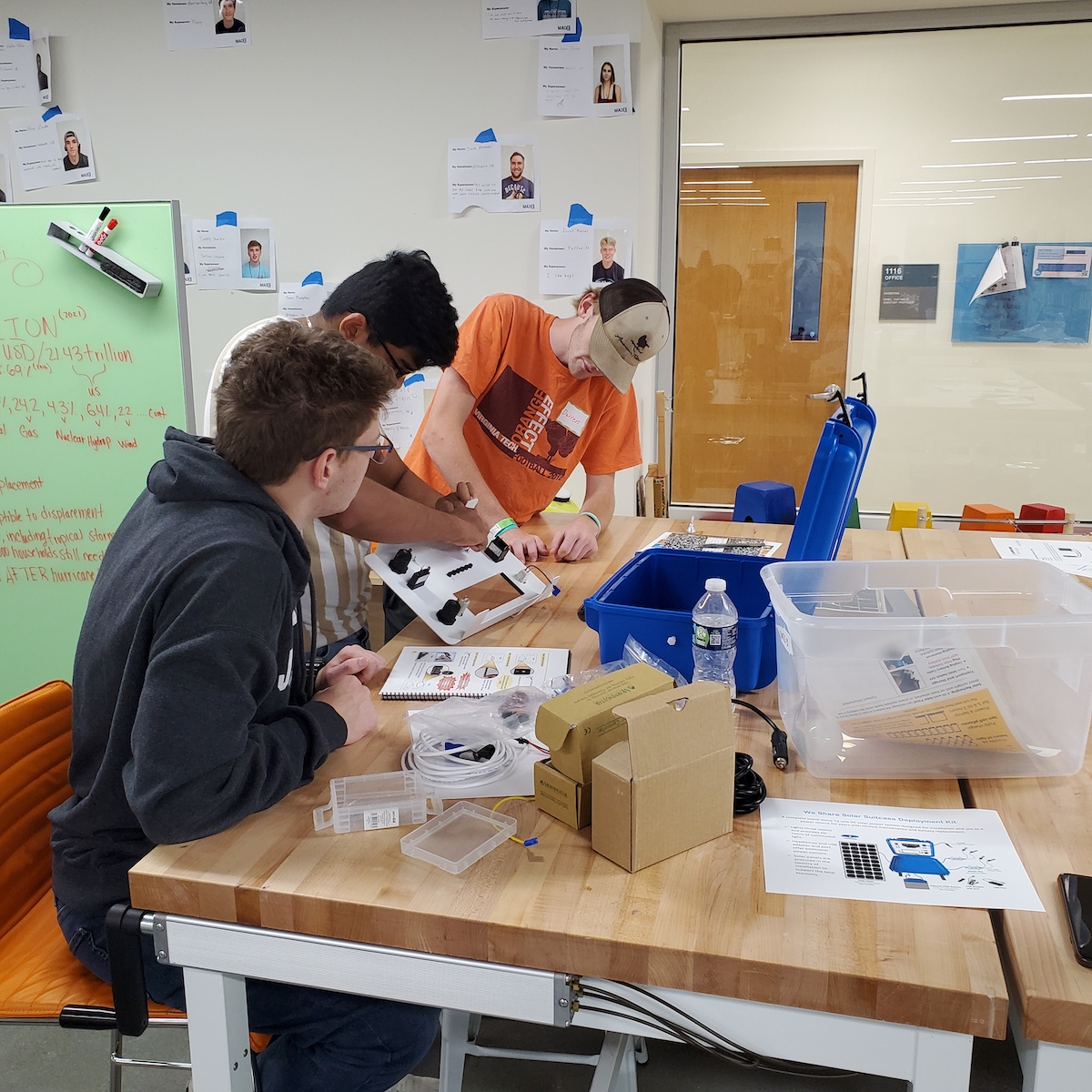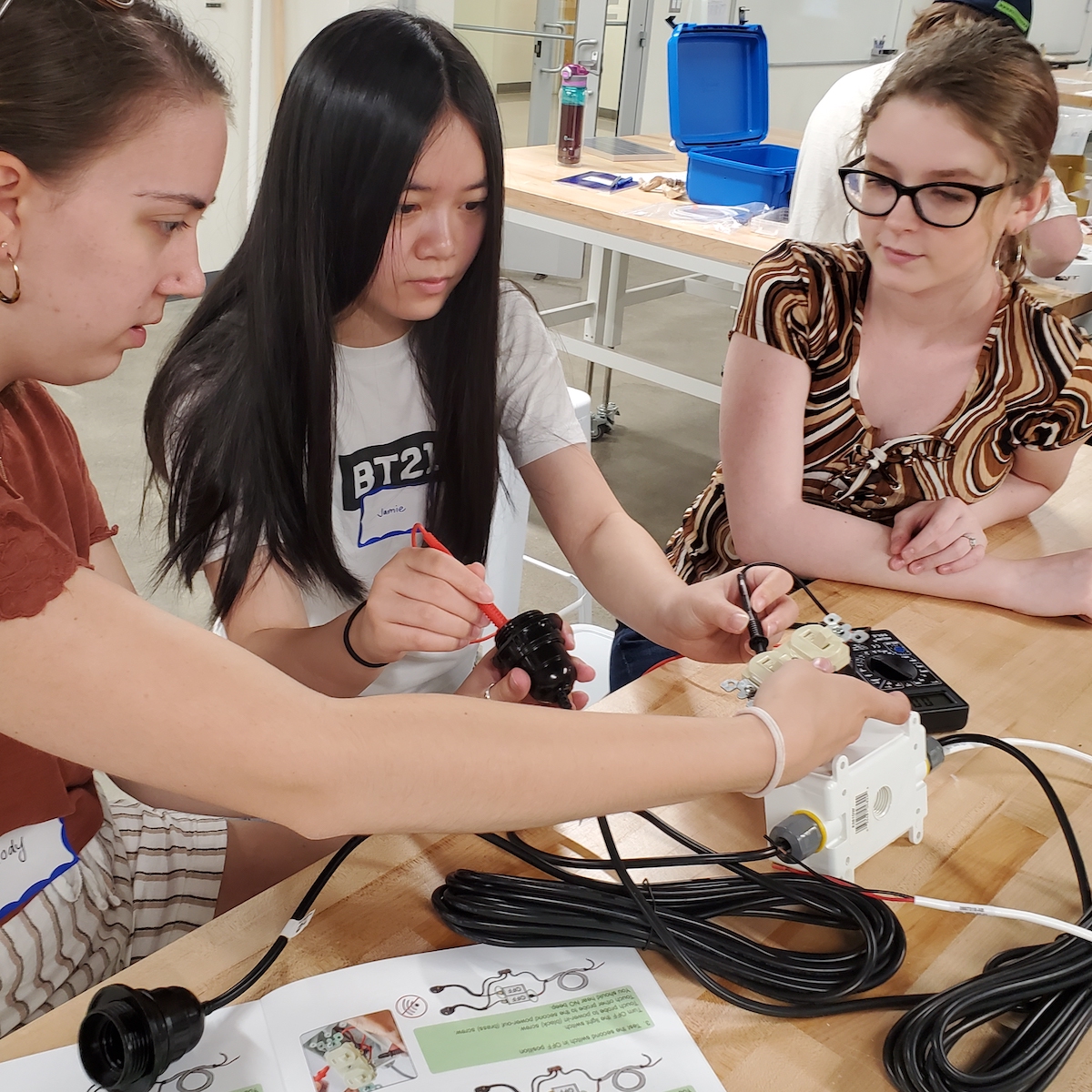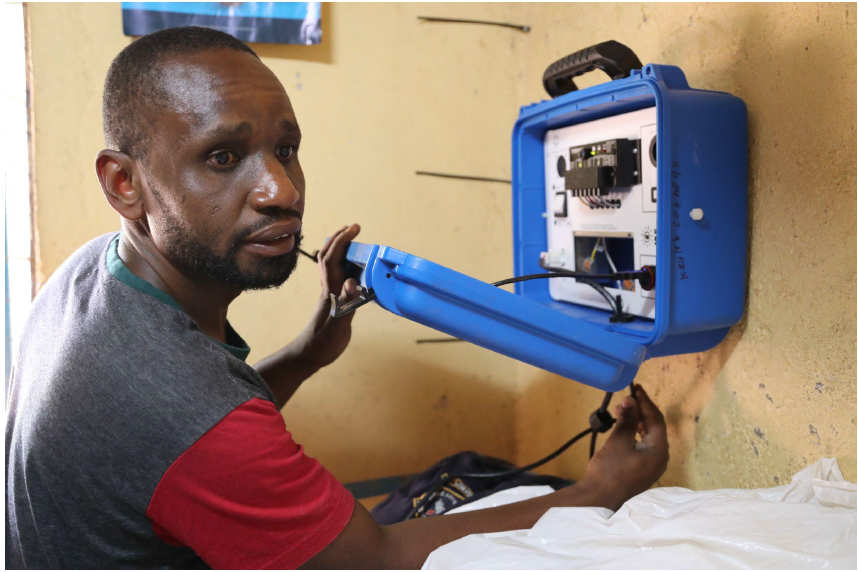It’s a question every student is asked: “What do you want to be when you grow up?”
For REpowering Schools, inspiring young people to think about pursuing careers in renewable energy is a passion.
Executive Director Remy Pangle says REpowering Schools was created in 2017.
“It’s a non-profit organization that supports renewable energy education around the country. We work with a lot of states and we have a great network of people who do amazing work on the ground bringing renewable education projects to students from kindergarten to twelfth grade but also at the college level as well,” she explains.

Students building a solar panel from a kit.
As the industry grows, they’re working hard to educate students of all ages about renewable energy and the many career paths it offers.
“Our goal is to connect educators and students with the renewable energy industry to help promote workforce development and to make sure that we’re all having these conversations with each other to make sure that our technology and renewable energy deployment goals can be met,” she says.
Those conversations are happening with many different stakeholders.
“Both industry and academia are working on workforce development and rather than having these two groups working separately, having them work together and making sure they’re communicating is a huge part of how we see the workforce grow in a way that can support this growing industry. We hope that this creates a sort of pipeline that will lead students through college and into the industry,” she explains.
Getting Started With Wind
Remy spends half her time working with REpowering Schools and the other half leading the Wind for Schools program at James Madison University in Virginia.
“REpowering Schools came out of the Department of Energy’s Wind for Schools program. It’s a fantastic program that was funded by the Department of Energy in the early 2000s and the goal was to support University partners who can instigate all of our workforce needs at their state level by teaching college students and bringing renewable energy into their course work. Internships and research also gets students in tune with what the industry needs,” Remy says.
Students also participated in projects that made an immediate impact on local schools and primary and secondary school students.
“One of the projects students would undertake was to install a small wind turbine at a local school. This gave them industry experience and in turn, the school gets an emblem of renewable energy and a great way for them to start engaging students in kindergarten through twelfth grade about wind energy,” she says.

The projects and programs supported by REpowering Schools are hands-on.
After nearly 20 years of working with Wind for Schools, Remy says it was time to start thinking about how to make the program self-sustaining.
“We knew this program wouldn’t last forever and we realized we needed to learn how to fundraise on our own. REpowering Schools was created as a non-profit that would work to help the different states that were involved with Wind for Schools to learn how to fundraise on their own behalf and find ways to bring money into the University to support what they’re doing,” she explains.
REpowering Schools programming now includes a focus on solar power as well.
Working with Pattern Energy
“We are super excited to be working with Pattern Energy. They are supporting us through a couple of specific projects we’re offering. We have a sponsored research project where we’re looking to find community colleges and universities that would like to start working on some agrivoltaics research. It’s a new trend and not every state is doing a lot with agrivoltaics so we’re hoping to get more states involved in this idea in hopes that they’ll help with community acceptance of solar,” she explains.
“At the elementary and high school level, Pattern is helping us direct some funds to engage in a project called Power to Share where we’re working with the We Share Solar team. They provide a curriculum where students receive a suitcase that can be built into a solar powered suitcase that is deployed to sub-Saharan Africa to power refugee camp schools,” Remy says.

One of the suitcase solar panels being installed.
The suitcase is waterproof and comes with an assembly guide and the components (like circuit control boards, batteries, and outlets) to build a solar panel. Once the system is wired and installed, it can power things like light bulbs and charge cell phones.
“It’s a fantastic demonstration on the application of solar power. It’s a fun project and for a little extra, they can be deployed. Students add artwork to the suitcase, write letters to the kids, and then it’s sent to somewhere that needs it like Kenya or Uganda,” she says.

A man holding one of the suitcase solar panels.
Making Industry Connections
REpowering Schools not only focuses on bringing educational opportunities to students and schools—they also work hard on creating connections within the industry.
“We have a couple of different educational partners that we work with closely. One of them is the National Energy Education Development project—the NEED project. We also work with the KidWind project and they offer hands-on curriculum and resources around wind and solar energy and the power grid as well. They also offer a competition called the KidWind Challenge and we work closely with them on this. We’ve also worked with the Everyday Superheroes Women in STEM. They just released a book about women in energy careers,” she says.

The Everyday Superheroes book also features Monica McDaniel, Senior Manager for Pattern Energy’s meteorological team. You can read more about Monica here: https://patternenergy.com/keeping-an-eye-on-the-weather-with-monica-mcdaniel/
Working with these groups helps REpowering Schools to build more connections within the industry to reach more students of all ages.
Learning Through Competition
There are many challenges and competitions that students can participate in as a way to learn more about renewable energy and how things like wind turbines and solar panels work.
“The KidWind Challenge is for students in fourth grade through twelfth grade. The competition involves building a working wind turbine to generate the most energy in our wind tunnel. The solar competition involves building a solar-powered structure or device,” Remy explains.
“At the college level, there’s the Collegiate Wind Competition. Students design a small wind turbine and bring it into the wind tunnel. They have to be able to remotely stop it, verify their power curve, and do all this technical stuff. They also have a project development activity where they have to create a fictional wind farm,” she says.
Other competitions involve business plans and working with industry partners. Similar competitions are focused on solar power as well.
Growing the Network
While they work with partners in several states across the country, Remy hopes to get more states on board.
“We really want to engage with more colleges and universities outside of the Wind for Schools networks. We love working with the twelve states we currently have but we know there’s a benefit to expanding outside of those states,”
Partners from New Mexico, New Jersey, and Trinidad and Tobego have recently joined the network.
As Repowering Schools works toward expanding their reach across the country, Remy says they’re hoping to strengthen connections internally as well.
“I know lots of teachers who are participating in the challenges or putting turbines up at their schools but I realized that they don’t really know each other. We have so many schools across the country with our wind turbines and now they’re adding solar panels. Our hope is to connect the schools with each other so they can share their experiences of what they’re doing with their turbines and panels, like activities or talking about them in class,” Remy says.
REpowering Students Through Grants
When grants are available, they are typically open to students in any state.
“We have two grants open right now. The Pattern Solar Agrivoltaics Research Project (LINK) is open and the National Renewable Energy Labs are sponsoring the seed funding for wind energy related activities at colleges and universities. Our Travel Scholarship will be open very soon to support college students attending industry conferences,” she says.
Ranging from a few hundred to a few thousand dollars each, it’s not difficult to apply.
“Most of our grants right now are relatively small so we make sure our applications are simple and don’t take a lot of time. It asks for a summary of your project, how much money you need, what the expected impact will be on students and the general public. It’s very basic,” she says.
Whatever the size of the grant, they encourage applicants to have an industry mentor. And if they don’t have one, Repowering Schools will help them find one from within their network of partners.
One thing REpowering Schools wants students to keep in mind is that careers in renewable energy aren’t limited to STEM-based jobs.
“I think when people hear about renewable energy, they think of engineering. There are definitely a lot of jobs in engineering in this industry. But the majority of people needed in our industry work in transportation and construction, electricians—jobs that you don’t necessarily need four to eight years of college for,” Remy says. “And not all of the jobs in the industry are science-based. There are social scientists, lawyers, financiers, communication specialists, people who write up contracts for land acquisition. You don’t necessarily need to be a STEM person to work in renewable energy, you just have to be passionate about helping to make a better future.”
Learn more about REpowering Schools by visiting their website.